#republic india
Explore tagged Tumblr posts
Text


Banana Republic Fall/Wint 1993 - Bridget Hall & India Hicks by Bruce Weber
88 notes
·
View notes
Text

#comida#food#empanadas#beef patties#samosas#pastelitos#momos#dumplings#pastries#pork buns#Jamaican beef patties#sambusa#runza#Puerto rico#mexico#dominican republic#colombia#venezuela#somalia#india#pakistan#japan#nepal#himalayas#jamaica#west indies#west indian#carnival
121 notes
·
View notes
Text
Happy India Republic Day! 🇮🇳

#meeraedits#india republic day#assad zaman#armand iwtv#kate sharma#simone ashley#edwina sharma#charithra chandran#desi tag#katesharmaedit#edwinasharmaedit#simoneashleyedit#cchandranedit#iwtvedit#amc iwtv#bridgertonedit#bridgerton#my edit#mine#representation#representation matters#queue are absolutely unpredictable
22 notes
·
View notes
Text
Happy India Republic Day! I🇮🇳


*mandatory not literal dagger: we of sense (not fascist or wannabe fascist) absolutely loathe Modi and the BJP and I am bi & genderqueer and if someone claims 'Hinduism hates you degenerates' or something, I will simply hurt you in ways no human can stand and congratulations on the ahistorical bs. Also ✨atheism intensifies ✨.*
#meera.txt#anti hindutva#india republic day#desi tag#desiblr#desi tumblr#bisexual#genderqueer#nonbinary#queer#lgbtq+#desi queer#mine#queue are more than what people see
24 notes
·
View notes
Text
Constitutional morality is not a natural sentiment. It has to be cultivated. We must realize that our people have yet to learn it. Democracy in India is only a top-dressing on an Indian soil which is essentially undemocratic. - Annihilation of Caste by B. R Ambedkar

Happy India Republic Day! 🇮🇳
#meerathehistorian#meeraedits#india republic day#desi tag#brown history#Annihilation of Caste#B. R Ambedkar#meera bai#jhansi ki rani#rani Lakshmi bai#desi queer#nur juhan#desi quotes#bisexual#queer#lgbtq+#queer history#bi history#history#on this day in history#india#hinduism#islam#islamic history#hindu history#intersectionality#intersectional feminism#anti caste#anti hindutva#queue are made by history
19 notes
·
View notes
Text









Vintage Indian postage stamps.
#vintage stamps#indian stamps#indian art#jaipur#rajasthan#mine#uploads#stamps#vintage art#vintage illustration#south asian art#asian art#elephant#mango#peacock#bharat#republic of india
40 notes
·
View notes
Text
Memorial service for Liam from all over the world ❤️
#liam payne#we love you liam#always our payno#liam memorial service#one direction#denmark#indonesia#india#japan#taiwan#italy#russia#argentina#ecuador#brazil#mexico#usa#britain#hungary#czech republic#australia#paris france#sweden#ireland#peru
19 notes
·
View notes
Text
14 notes
·
View notes
Text

nationalism is a bullshit ideology that is manufactured by the rich to make you feel connected to a class of rulers that you share nothing in common with
93 notes
·
View notes
Text

Kitty's watching the sunbeams on the ground again.
Lion (Panthera leo)
Parts of Africa as well as Gujurat, India
Status: Vulnerable (global); Critically Endangered (West African population); Endangered (Indian population)
---
At the time of the ancient Greeks, lions roamed most of Africa and from Greece to India. They are now limited mostly to conservation areas in Africa and the Gir National Park in India.
Today's lion and yesterday's tortoise relate to a tarot/oracle reading I saw the other day on Youtube, so... call this a little bit of manifestation if possible. Bring me some lion's power. 🔥
One thing that suddenly struck me was this. I've looked at a lot of tarot decks because I love art and symbolism. I realized that while SO many Strength cards feature the classic lion, it's strange that I think I've never seen one—even in feminine decks—that features a lioness. The maned lion is of course iconic and lovely in art, but the lioness can be such a feminine power symbol.
So I thought I'd draw this lovely lady.
#lion#feline#big cat#mammal#lion art#artists on tumblr#tarot#strength#lioness#africa#asia#india#benin#botswana#burkina faso#cameroon#central african republic#chad#democratic republic of the congo#ethiopia#kenya#mozambique#nigeria#niger#namibia#senegal#somalia#south africa#south sudan#sudan
21 notes
·
View notes
Text
Happy republic day to all my fellow Indians on desiblr<3 🇮🇳
10 notes
·
View notes
Text

#kabirisgod#santrampaljimaharaj#india#delhi#artists on tumblr#republic day 2025#kabir is real god#usa#godkabir
8 notes
·
View notes
Text
The next section of Cinderella Tales from Around the World is devoted to a lesser-known Cinderella subtype: One-Eye, Two-Eyes, Three-Eyes.
*The most famous tale of this type is the German version from the Brothers Grimm. To summarize:
**A woman has three daughters, each with a different number of eyes: One-Eye, Two-Eyes, and Three-Eyes. The middle sister, Two-Eyes, is hated and abused by her mother and sisters because she's beautiful and normal-looking. (There's no mention of how many eyes the mother has.) Every day she's sent out to pasture the goat, starving because her family only feeds her scraps. But one day she meets a "wise woman" (i.e. a fairy) who instructs her to recite a rhyme, and then her goat will bring her a table covered with food. She does this every day, until her mother notices that she's not eating her scraps anymore. One-Eye goes out to spy on her, but Two-Eyes sings her to sleep. Then Three-Eyes goes out, and again Two-Eyes sings, but in her lullaby she mistakenly sings "Two-Eyes" instead of "Three-Eyes," so only two of her sisters' eyes fall asleep while the third stays awake and sees how she feeds herself. She reports it to the mother, who kills the goat. But the wise woman instructs Two-Eyes to bury the goat's entrails, and when she does, a tree with silver leaves and golden apples grows from the spot. Whenever the mother or sisters try to pick the apples, the branches move out of their reach, but Two-Eyes is allowed to pick them. One day, a handsome young knight rides by, and the mother and sisters hide Two-Eyes under a barrel. But the knight admires the tree and asks for a branch from it, yet neither One-Eye nor Three-Eyes can break one off. Then Two-Eyes rolls some golden apples out from under the barrel, revealing her presence, and gives the knight his branch. The knight wants to reward her, so she asks him to take her away from her cruel family. He takes her to his castle, where the tree magically follows them, and soon afterward they marry. Some time later, One-Eye and Three-Eyes appear at the castle door, now reduced to beggars. Two-Eyes forgives them and takes them in, and her kindness makes them repent their former treatment of her.
*The other tales of this type that Heiner's book features come from France, Scotland, Denmark, Russia, the Czech Republic, India, and the United States.
**There are three French versions: Little Annette, The Golden Pear-Tree, and The Golden Bells.
*** All three include the heroine's ineffectual father, in contrast to the all-female household in the Grimms' version, and in the first and third tales, the wicked women are the heroine's stepmother and stepsisters instead of her birth family.
***In The Golden Bells, the heroine, Florine, is a princess, and her father and wicked stepmother are the king and queen. In Little Annette, the girl's eventual husband is a prince, while in the other two, he's a king.
***None of these versions include the "one-eye, two-eyes, three-eyes" motif either: in Little Annette, the stepmother magically adds an eye to the back of her youngest daughter's head, which stays open while her own eyes sleep, while in the other two the (step)sister just pretends to sleep.
***In all three, the heroine receives her food by tapping a sheep with a magic wand. In Little Annette, the wand is given to her by the Virgin Mary, in The Golden Pear-Tree by a man, and in The Golden Bells by her dying mother at the beginning. Also, rather than personally killing the sheep, the (step)mother pretends to be sick and insists that only eating the sheep's meat will cure her, so the father kills it.
***In Little Annette, the magic tree that grows from the sheep's remains just bears "the most tempting fruit," while in the other two tales, as their titles imply, it respectively bears golden pears and constantly-ringing golden bells.
***The Golden Pear-Tree and The Golden Bells both continue after the heroine's marriage with a plot against her while her husband is away at war. In The Golden Pear-Tree, the heroine gives birth to twins, and her wicked mother-in-law replaces them with two puppies, which causes the king to order his wife executed. Unfortunately, this story only survives as a fragment with no ending, but presumably the heroine escapes somehow and reunites with her husband and children after the truth is revealed. In The Golden Bells, the stepmother throws Florine into a river. But when she does so, the bells on the tree stop ringing, and the king hears this, realizes something is wrong, hurries home, and rescues Florine.
**In the odd Scottish tale of The Sheep's Daughter, the heroine is the king's secret illegitimate daughter, whose mother is a sheep. (Apparently an anthropomorphic one who lives in a house, although the queen is able to order her slaughtered like any other sheep.) The wicked women are the king's wife and legitimate daughters. The king secretly pays regular visits to the sheep and her child, bringing them gifts, until the queen has her two daughters spy on him. The sheep magically sings the first princess to sleep, but accidentally leaves one of the second princess's eyes awake, so the queen learn's what's happening, and has the sheep killed. The heroine buries her mother's bones, then lives alone in their cottage for five years, at which point a prince gives a three-day feast. The heroine's mother rises from her grave, transformed from a sheep into a beautiful princess: she dresses her daughter in finery, and from there on the story becomes Cinderella, with the heroine attending the festival and losing a slipper on the third night, which the prince uses to find her.
**In the Danish Mette Wooden-Hood, the wicked women are again the heroine's stepmother and stepsisters: the stepmother starts out as Mette's seemingly-kind schoolteacher, who of course manipulates her into convincing her father to marry her. Mette's helper is her mother's spirit, who comforts her at her gravesite and summons doves to feed her. But eventually the younger stepsister, who has an extra eye in her neck, learns this, and Mette is locked up so she can't visit the grave anymore. Mette finally manages to run away, however, and her mother's spirit gives her a wooden dress to wear and a box that will grant her wishes when she taps it. From this point on, the story becomes like Donkeyskin or All-Kinds-of-Fur, as Mette becomes a scullery maid at a palace, attends church in magic finery three times, and on the third Sunday loses a shoe.
**In one of the two Russian versions, Little Havroshecka, the heroine is an orphan while the wicked mother and daughters are her foster family, and in other, Burenushka, they're her stepmother and stepsisters: they're also a queen and princesses in the latter. In both of these versions, "One-Eye, Two-Eyes, and Three-Eyes" are the heroine's three wicked stepsisters, in contrast to the Grimms' version where Two-Eyes is the heroine. The animal helper is a cow, who magically spins flax for the heroine in Little Havroshecka, magically feeds her in Burenushka. In the former story, after the cow is killed, a silver tree grows from her remains with golden leaves and crystal apples, which only Havroshecka can pick, while in the latter tale, a berry bush grows on which birds sing, and the birds chase away anyone who tries to pick the berries except for the heroine. Little Havroshecka ends with Havroshecka's marriage, while Burenushka continues with the heroine giving birth to a son, her stepmother turning her into a goose, and her coming back each day to briefly resume human form and suckle her baby, until her husband finds out and breaks the spell by burning the goose skin.
**In the Czech tale of The Girl Who Had a Witch for a Stepmother, "One-Eye, Two-Eyes, and Three-Eyes" are again the heroine's three wicked stepsisters, and the animal helper is again a cow, who spins the heroine's flax for her, as promised by her mother's spirit. After the cow is killed, her remains produce an apple tree and a well full of wine, both of which only the heroine can access. A prince proposes marriage to her as a result, but on their wedding day the stepmother locks her up and sends one of her own daughters disguised in the bridal clothes, cutting her feet to make the shoes fit. But the heroine turns herself into a bird and flies after her prince and stepsister, calling out the truth. Thus she gets her happy ending.
**The Iranian tale of The Story of How Fatima Killed Her Mother and What Came of It, is obviously related closely to the Iranian Cinderella tale shared earlier in the book, The Story of Little Fatima. Once again, we have a heroine named Fatima whom a wicked woman persuades to kill her own mother, and then persuade her father to marry the woman who urged it. But after the stepmother turns abusive and starves her, the mother's forgiving spirit instructs Fatima in a dream to buy a yellow calf, which produces food from its ears. Meanwhile, the stepmother gives birth to two daughters of her own, Four-Eyes and Four-Stumps, who spy on their half-sister when they're old enough and discover her secret. After the calf is killed, the story has various twists and turns that include a "kind and unkind girls" episode, a Cinderella-style lost shoe leading a prince to Fatima, and Four-Stumps murdering and replacing Fatima after she gives birth to a son, only for Fatima to miraculously come back in the end.
**The Indian tale of Lal Badshah, the Red King, or The Two Little Princesses revolves around two sister princesses who are abused by their stepmother. They secretly find food each day on their mother's grave, until their stepmother's cat spies on them and reports it, and the wicked queen manipulates the king first into desecrating the grave, and then into abandoning his daughters in the forest, Hansel and Gretel-style. After many more twists and turns, the two finally live happily ever after, with one princess married to a king and the mother of a son, and her devoted sister by her side.
**Last of all is a Latin American tale called One-Eye, Two-Eyes, and Three-Eyes, where as in the Grimms' tale, Two-Eyes is the heroine abused by her cruel mother and sisters. But otherwise, this is a Cinderella story. A prince gives three balls, and Two-Eyes is forbidden to go; but before the first ball, the prince meets and falls in love with Two-Eyes, so he secretly sends her a coach and finery each night. On the night of the third ball, the mother has Three-Eyes stay home to spy on Two-Eyes, and though two of her eyes fall asleep, her third eye discovers Two-Eyes' secret. The next day, when the prince comes to the house to ask for Two-Eyes' hand in marriage, the mother locks her away and tries to offer him first One-Eye, then Three-Eyes. But of course he rejects them both and finds Two-Eyes in the end.
*It's strange that the Grimms, who normally bowdlerized wicked mothers into stepmothers in their tales, offer one of the very few versions of this tale where the heroine's abusers are her own mother and sisters instead of a stepmother and stepsisters. That said, in their footnotes they do allude to other variants where the heroine is a stepdaughter and her helper is her mother's spirit.
I'm almost finished reading this enormous anthology. After this brief section comes the last set of tales: Cinderella tales that don't fit into any of the usual categories.
@ariel-seagull-wings, @adarkrainbow, @themousefromfantasyland
#cinderella#one-eye two-eyes three-eyes#fairy tale#variations#cinderella tales from around the world#heidi anne heiner#the brothers grimm#tw: animal death#tw: violence#tw: murder#germany#france#scotland#denmark#russia#czech republic#iran#india#the united states
39 notes
·
View notes
Photo


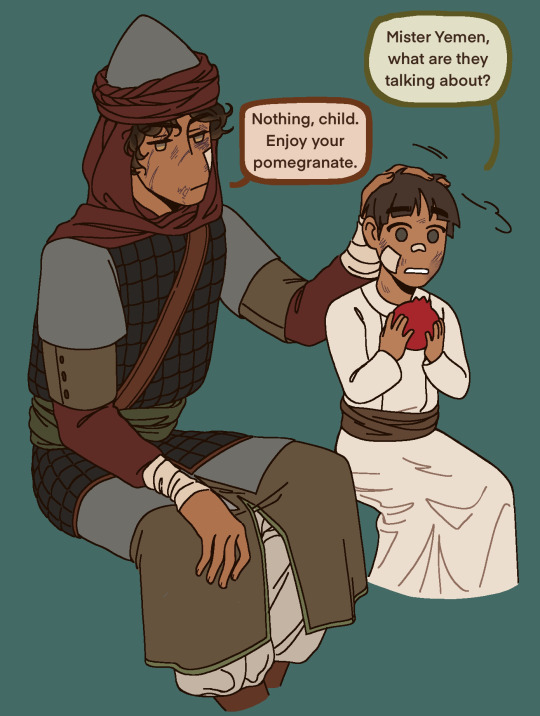
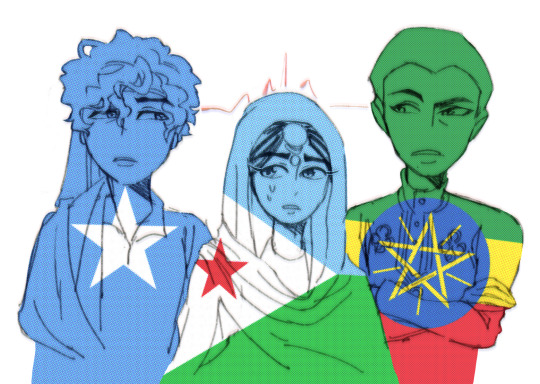
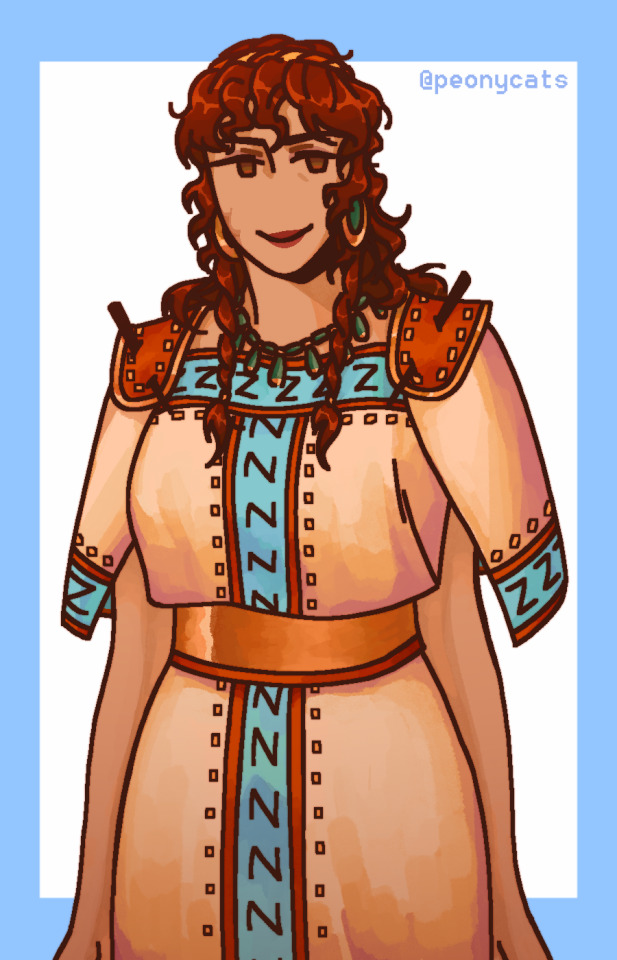

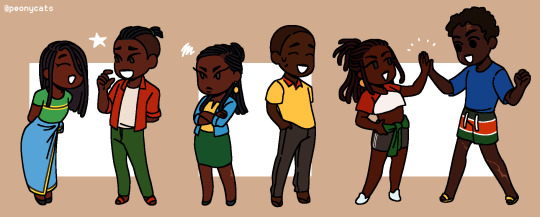
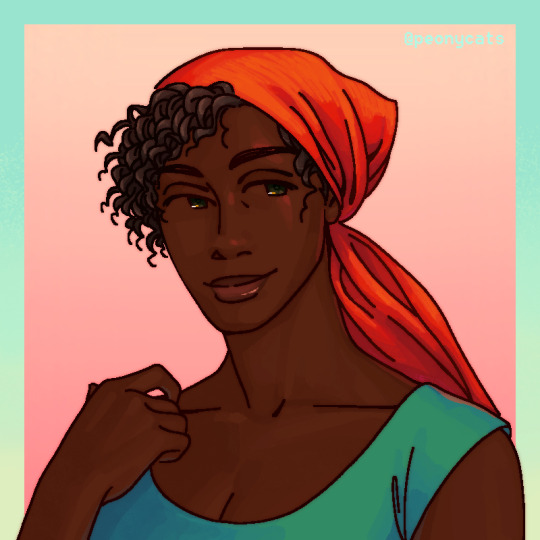
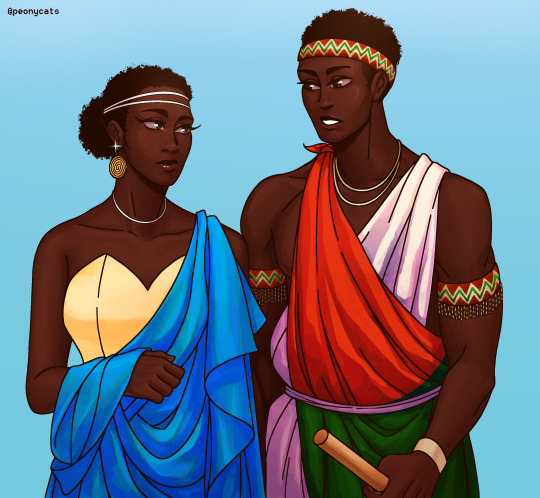

MISC ART DUMP 3
I tripped over and remembered I actually have a bunch of drawings saved up for larger posts that never came to fruition so have them while they’re within my brain attention span (alot of this shit dates back to 2021 or even 2020 so thats why its so uggo)
from top to bottom, left to right:
Belarus (chillin)
Iran, Afghanistan (Two greatly contrasting viewpoints)
Yemen, bby Oman (Oman got his ass beat by one of Saudi Arabia’s bros and Yemen got conscripted rip)
Somalia, Djibouti, Ethiopia (this is so ancient please don’t look at it)
Tarquinia/Etruria (No idea how accurate the colors are, but I do remember basing the jewelry after actual artifiacts)
Central African Republic/Centrafique (Centrafrique was meant to be a man originally, and this was one of the first drawings I did to try and redesign her!)
Tanzania, Burundi, Uganda, Rwanda, Kenya, South Sudan (Jfc south sudan is yuge)
Malawi (Still not 100% happy with her design, but I still like this!)
Rwanda, Burundi (A Rwandan tourism twitter account liked this)
India, Afghanistan (Fatality)
#hws belarus#hws iran#hws afghanistan#hws yemen#hws oman#hws somalia#hws djibouti#HWS Ethiopia#hws tarquinia#hws etruria#hws central african republic#hws bahrain#hws malawi#hws rwanda#hws burundi#hws india#hws tanzania#hws uganda#hws kenya#hws south sudan#historically inaccurate hair is historically inaccurate#hetalia#hetalia ocs#aph belarus
265 notes
·
View notes
Text

how is this the first time I'm hearing of this
14 notes
·
View notes
Text


Como hoy es día de la raza quise hacer unos dibujitos :p
#countryhumans#countryhumans taino#countryhumans art#countryhumans republica dominicana#artwork#artists on tumblr#countryhumans dominican republic#countryhumans virreinato colombino#virreinato de las indias
11 notes
·
View notes